Last summer, I joined the Thomas J. Watson Library staff as an Adrienne Arsht intern, excited to begin a career in librarianship. I felt fortunate to find myself among passionate leaders and mentors at Watson Library. Moreover, I was excited to be working on an ambitious and important initiative called the Artists of the Holocaust project.
In 2019, Ken Soehner, Arthur K. Watson Chief Librarian, and Holly Phillips, collections manager for acquisitions, began enhancing our holdings of artists of the Holocaust. These books give voice to artists whose work and story had been otherwise ignored, forgotten, or erased. The now expansive collection covers three broad categories: art from the internment camps published as post-war portfolios; retrospective books on art in the Holocaust from the 1940s to the present; and finally, Holocaust publications by artists who were not interned, including war artists.
Working within this scope, I helped to expand the already significant collection using a multi-step research process. Sometimes emotion overcame me while I was reading about an artist or flipping through the pages of a new acquisition. During this process, I learned that my family had relatives in the Nazi Theresienstadt Ghetto, in the former military fortress town of Terezín. Many Theresienstadt prisoners were artists, musicians, and intellectuals. In fact, a vibrant artistic culture existed despite the horrific reality of the camp, and the largest collection of Holocaust art can be traced back to Theresienstadt.
Although I am Jewish and have worked closely with Holocaust survivors before, I used to think that I had a relatively distant relationship to the atrocities of World War II. However, researching artists from Theresienstadt brought my own family history into focus and deepened my appreciation for Watson Library’s commitment to building the Artists of the Holocaust collection.
Below is a selection of publications which we have recently required.
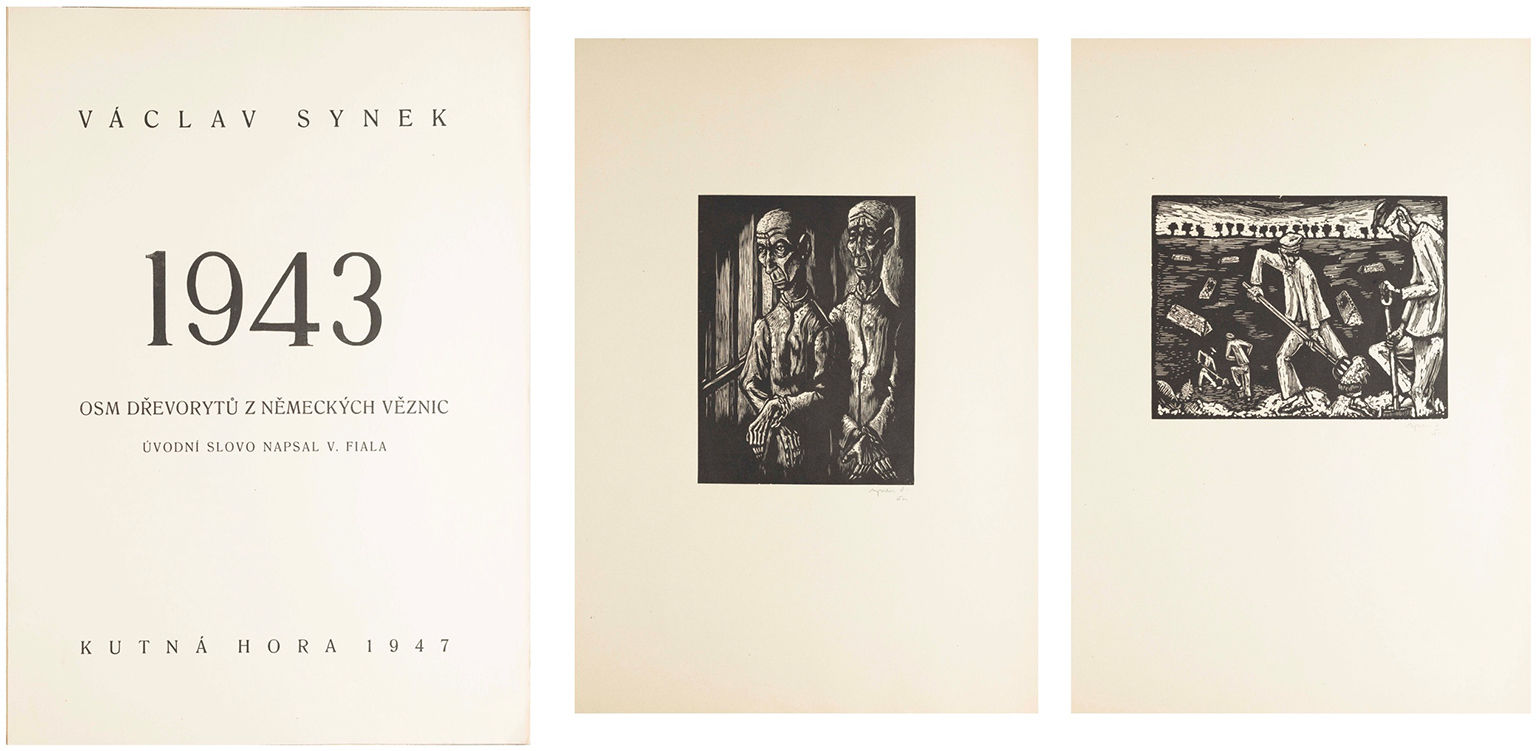
Václav Synek, 1943: Osm Dřevorytů z Německých Věznic (Kutná Hora: Okresní kulturně-propagační komise KSČ v Kutné Hoře, 1947)
This incredible folio-sized portfolio features eight woodcuts of the concentration camps, each hand-signed by the artist, Václav Synek. This edition also includes an additional woodcut on the front free end paper, plate listing, text introduction, and publisher’s blank tissue dustwrapper. The woodcuts are a culmination of artistic exploration by the artist, Synek, and author, Václav Fiala, who were both interned in concentration camps for their participation in anti-Nazi resistance.

Leo Haas, 12 Původních Litografií z Německých Koncentračních Táborů (Praze: Vydal Svaz Ozvobozených Politických Vězňů a Pozůstalých Po Politických Vězních, 1947)
This set of twelve folio-sized lithographs was published in 1947, two years after Leo Haas’ liberation from the camp Ebensee. The lithographs are 19" x 13.5”, with text in English, French, Czech, and Russian accompanying the graphic work. Haas, alongside artists Ferdinand Bloch, Otto Unger, and Bedrich Fritta, secretly documented life in the camp while working for the Nazis’ graphic department in Terezin.
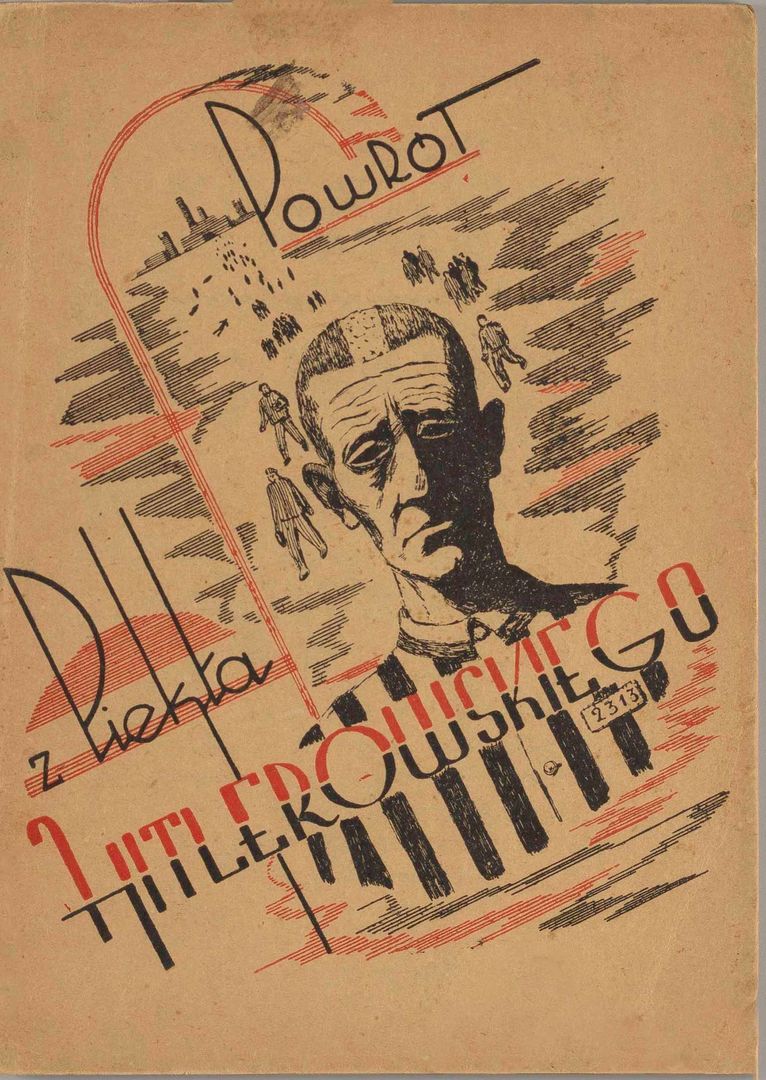
Antoni Gładysz, Powrót z Piekła Hitlerowskiego: Wspomnienie z Obozu Koncentracyjnego w Gross-Rosen i Litomierzycach (Tarnów: Nakł. Administrcji "Hasła Ogrodniczo-Rolniczego,” 1945)
Published right after the war in 1945, this book is a first edition featuring the artist’s personal narratives in Polish text, interwoven with thirteen graphic illustrations depicting the artist’s experiences in the labor camp Gross-Rosen. A second edition was published in 1946 by Zwiazek B. Wiezniów Ideowo-Politycznych and features different cover artwork
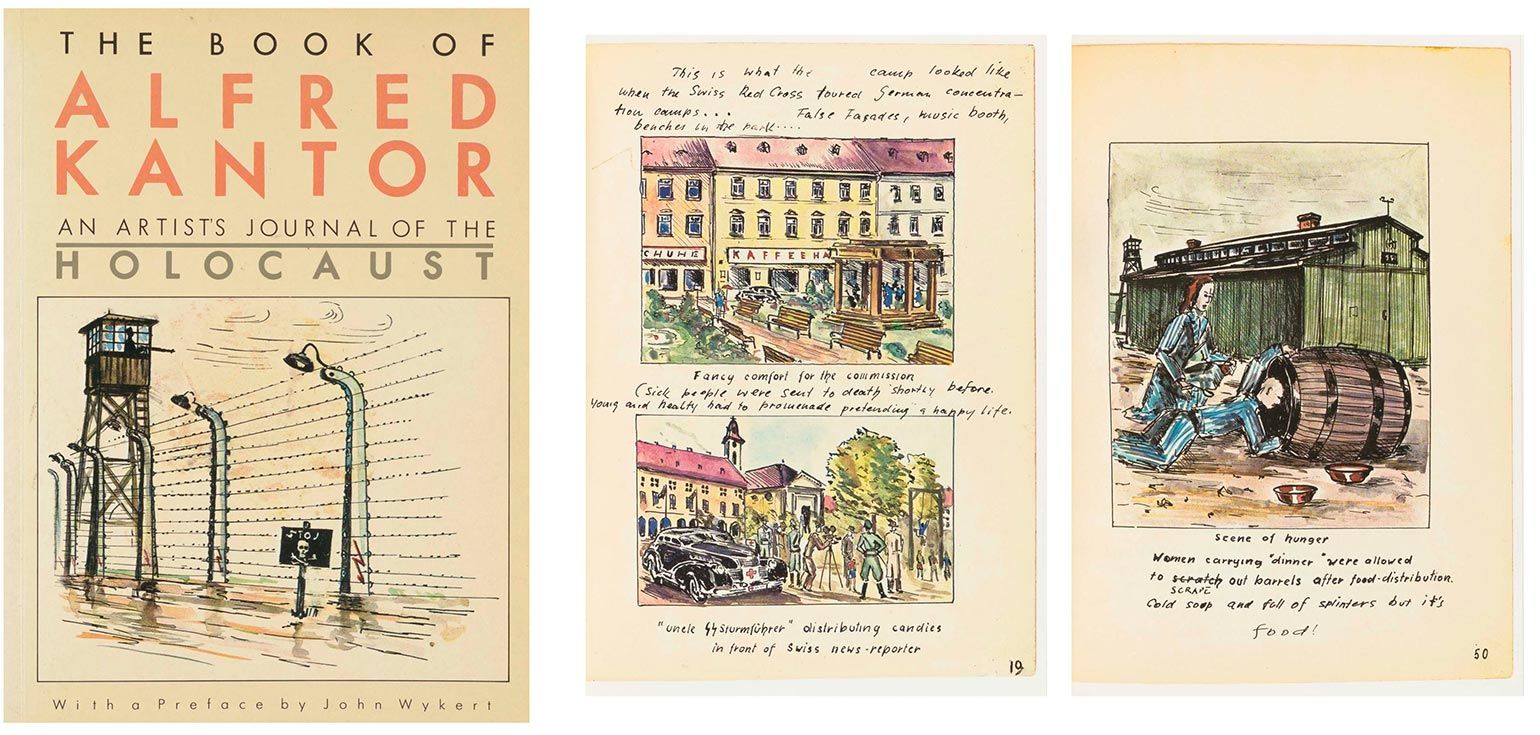
Alfred Kantor, The Book of Alfred Kantor: An Artist’s Journal of the Holocaust (New York: Schocken Books, 1987)
This book is a facsimile of work done by Alfred Kantor, documenting his experiences as a prisoner in Terezin, Auschwitz, and Schwarzheide. The illustrations in this diary were done mostly from memory after the war. They include images of Terezin’s false remodeling for the International Red Cross Commission (shown above), juxtaposed with heartbreaking depictions of daily life in the camps. There are forty-two pages and 127 leaves of plates, with book and book jacket designed by renowned graphic designer Herb Lubalin.
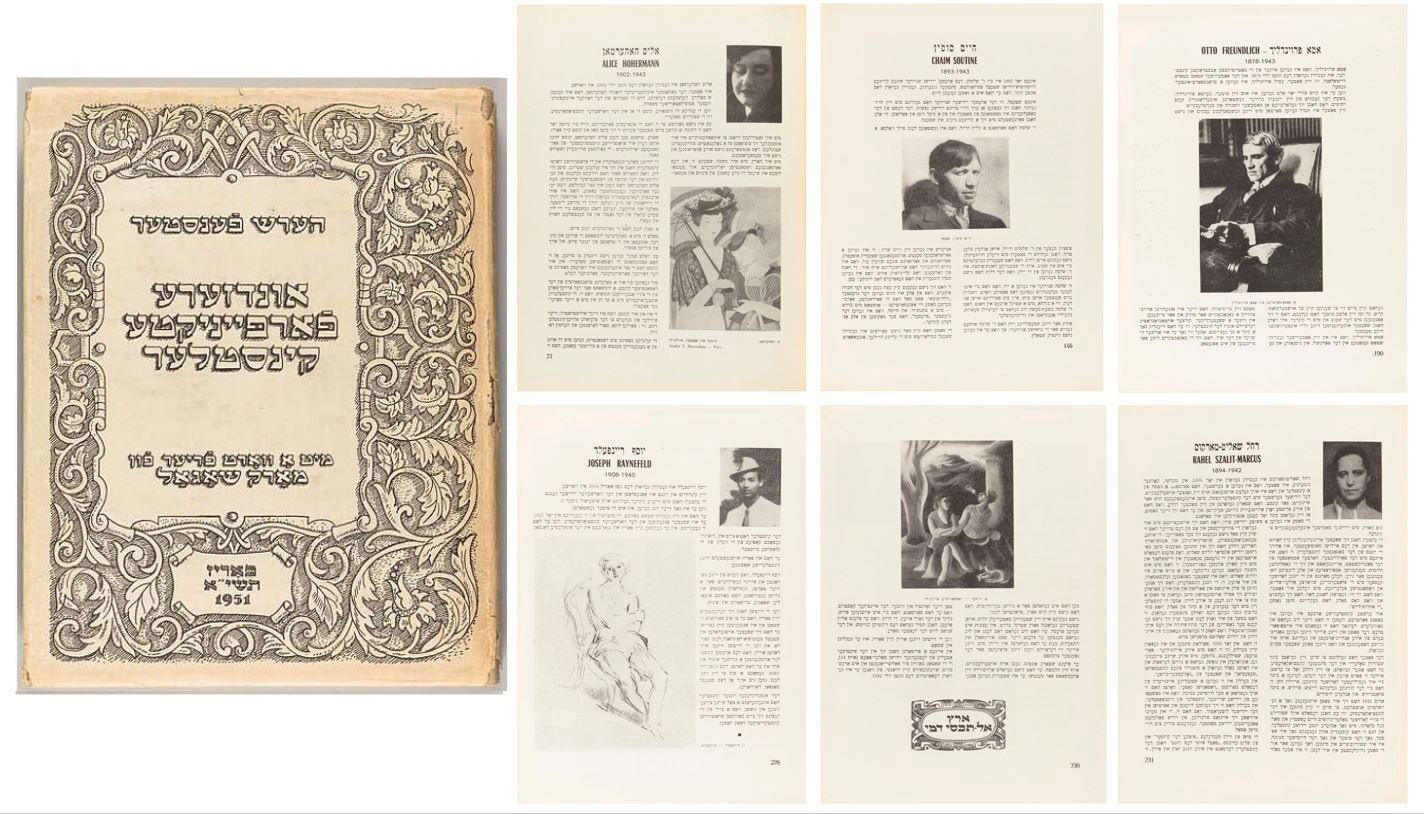
Hersh Fenster, Undzere farpayniḳṭe ḳinsṭler = אונדזערע פארפייניקטע קינסטלער (Paris: H. Fensṭer, 1951)
A limited edition of 375 copies, Undzere farpayniḳṭe ḳinsṭler surveys the art of eighty-four French Jewish artists from the School of Paris who were murdered during the Holocaust. It is both an art book and a memorial, and it includes biographies, photographic portraits, and reproductions of their art, with a foreword by artist Marc Chagall. Originally in Yiddish, there is also a French translation for the catalog of an exhibition held at Musée d'art et d'histoire du judaïsme in 2021.
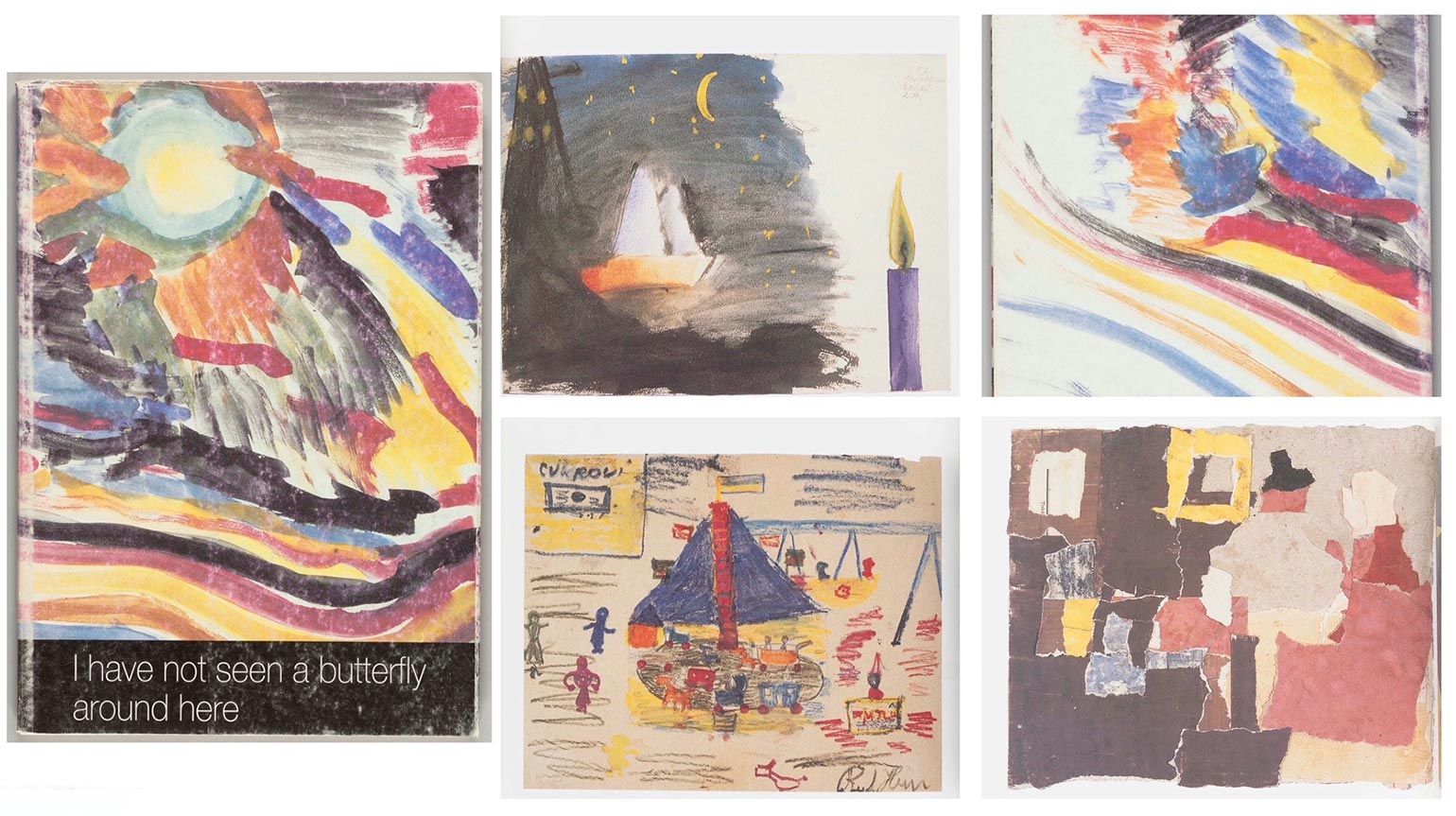
I Have Not Seen a Butterfly Around Here: Children's Drawings and Poems from Terezín (Prague: Jewish Museum, 1993)
This moving selection of children’s writings and art is based on the 1959 book, I Have Not Seen a Butterfly Around Here. Friedl Dicker-Brandeis was an artist who taught children’s art lessons in Terezin. This collection is a testament to her leadership and to the miracle of children’s imagination, even in the face of extreme horror. Watson’s copy is a sixth reprint, first edition, with a forward by Jiří Weil reprinted from the 1959 edition.
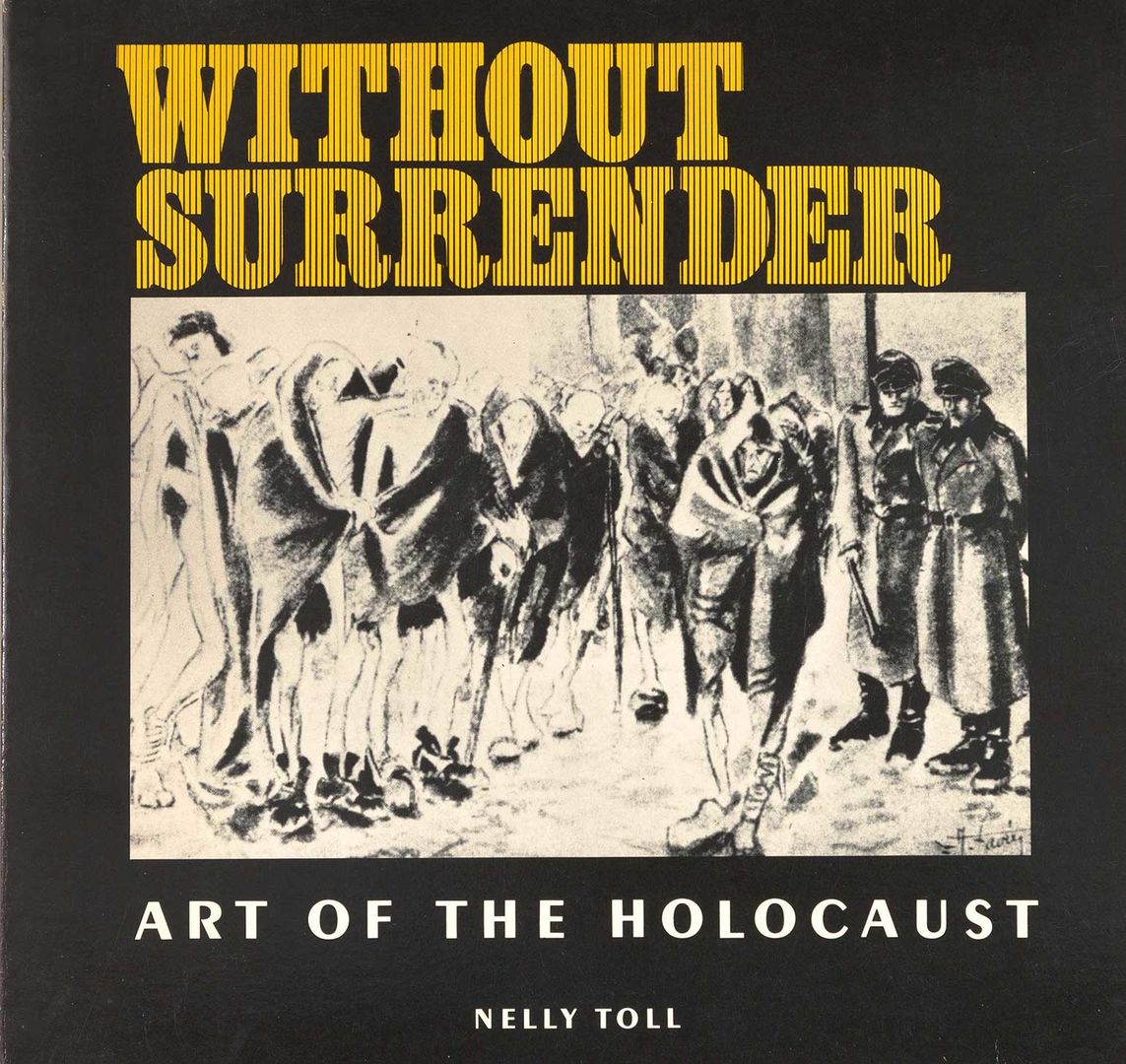
Nelly Toll, Without Surrender: Art of the Holocaust (Philadelphia: Running Press, 1978)
There are many women artists of the Holocaust who not only documented what they saw but also rallied and led victims in the concentration camps, organizing art communities and leading children in artistic expression. At eight years old, Nelly Toll was in hiding with her mother when she began documenting her experiences in watercolor. She survived to be an artist and scholar, and has published several books on Holocaust art. The monograph above features a short biography, retrospective commentary on her childhood illustrations, and a collection of various essays and drawings by other artists that highlight Jewish resistance during the war.
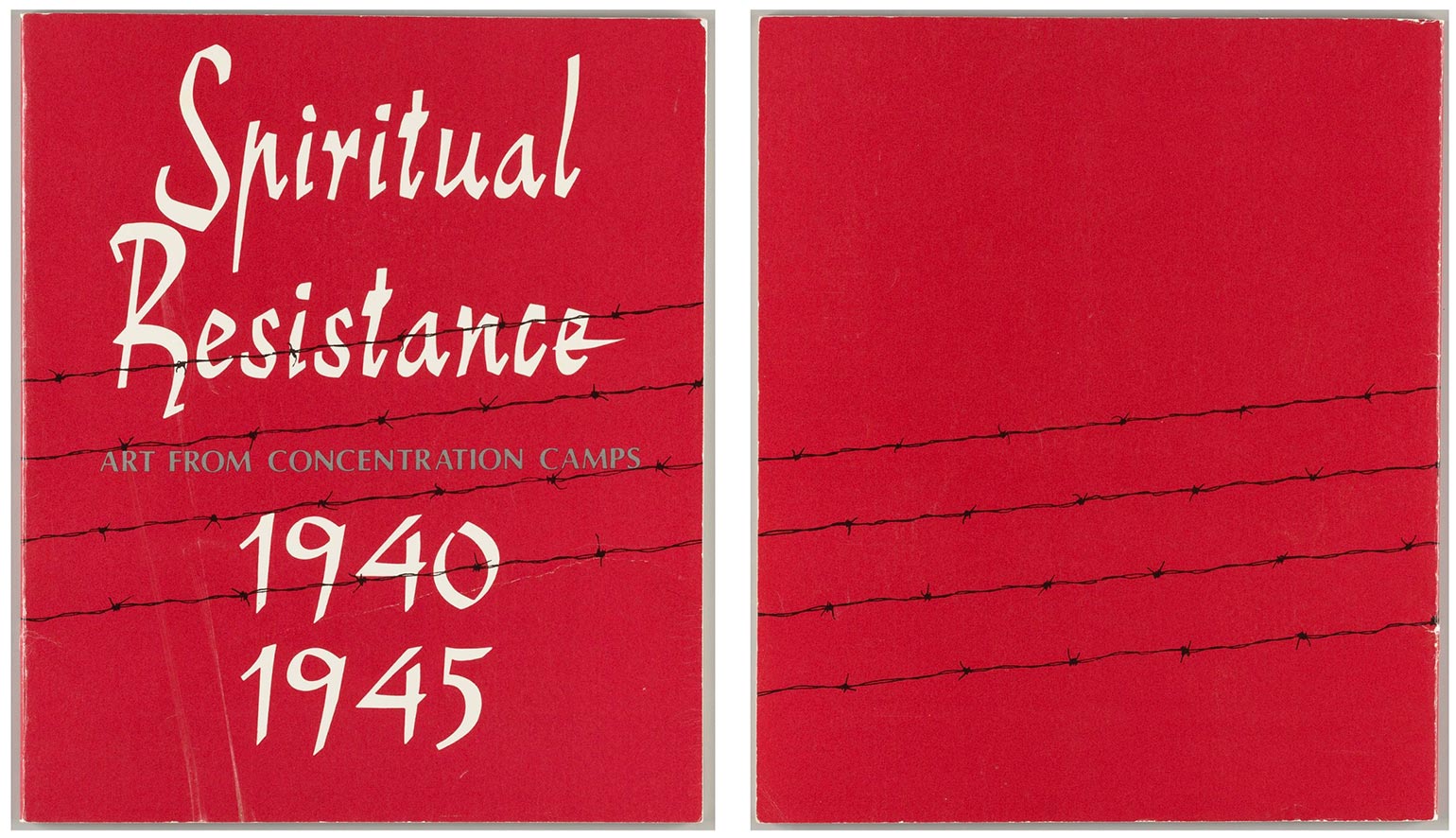
Spiritual Resistance: Art from Concentration Camps, 1940–1945: A Selection of Drawings and Paintings from the Collection of Kibbutz Lochamei HaGhettaot, Israel (New York: Union of American Hebrew Congregations, ©1978)
This catalog of a traveling exhibition held at the Baltimore Museum of Art and other museums, published by the Union of American Hebrew Congregations in 1978, is the first exhibition to represent a large group of major artists of the Holocaust.
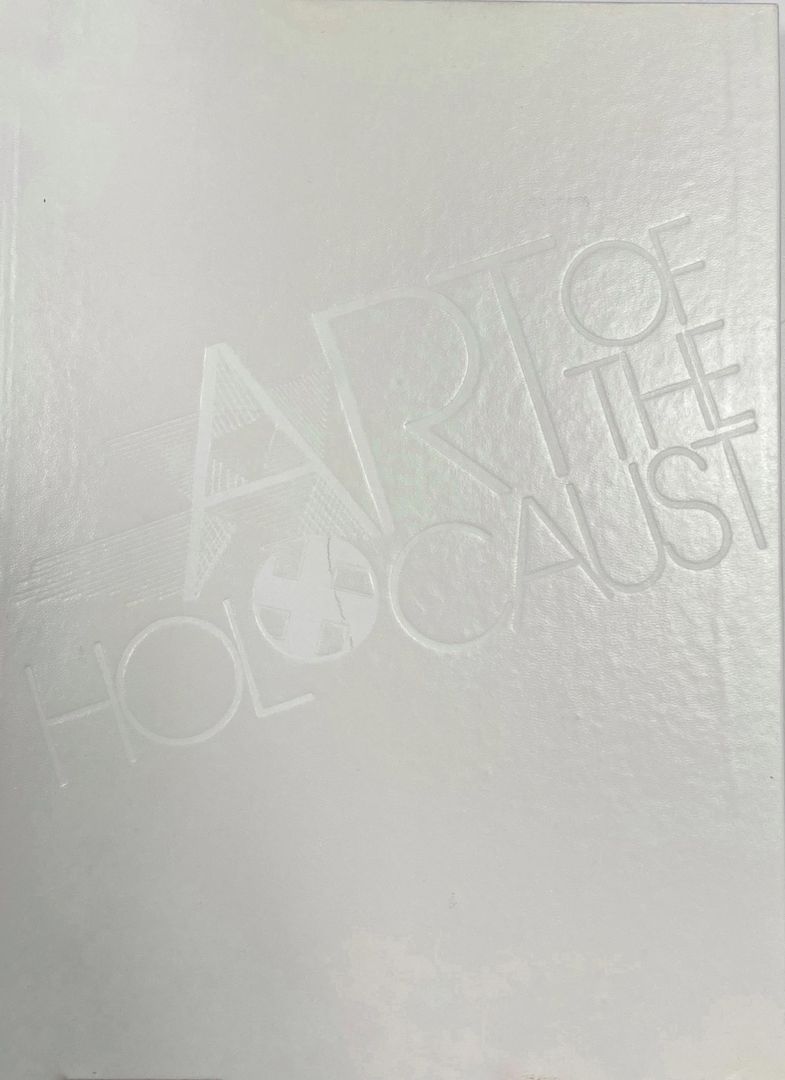
Janet Blatter, Art of the Holocaust (New York: Rutledge Press, 1981)
In addition to artist monographs and exhibition catalogs, the library also has a strong collection of compilations of artists of the Holocaust. The above book features the work of Leo Haas, Mieczyslaw Koscienlniak, Malvina Schalkova, Felix Nussbaum, and more, with a historical introduction by Henry Friedlander and preface by prominent social critic Irving Howe. It is the first survey of works by artists imprisoned in concentration camps.
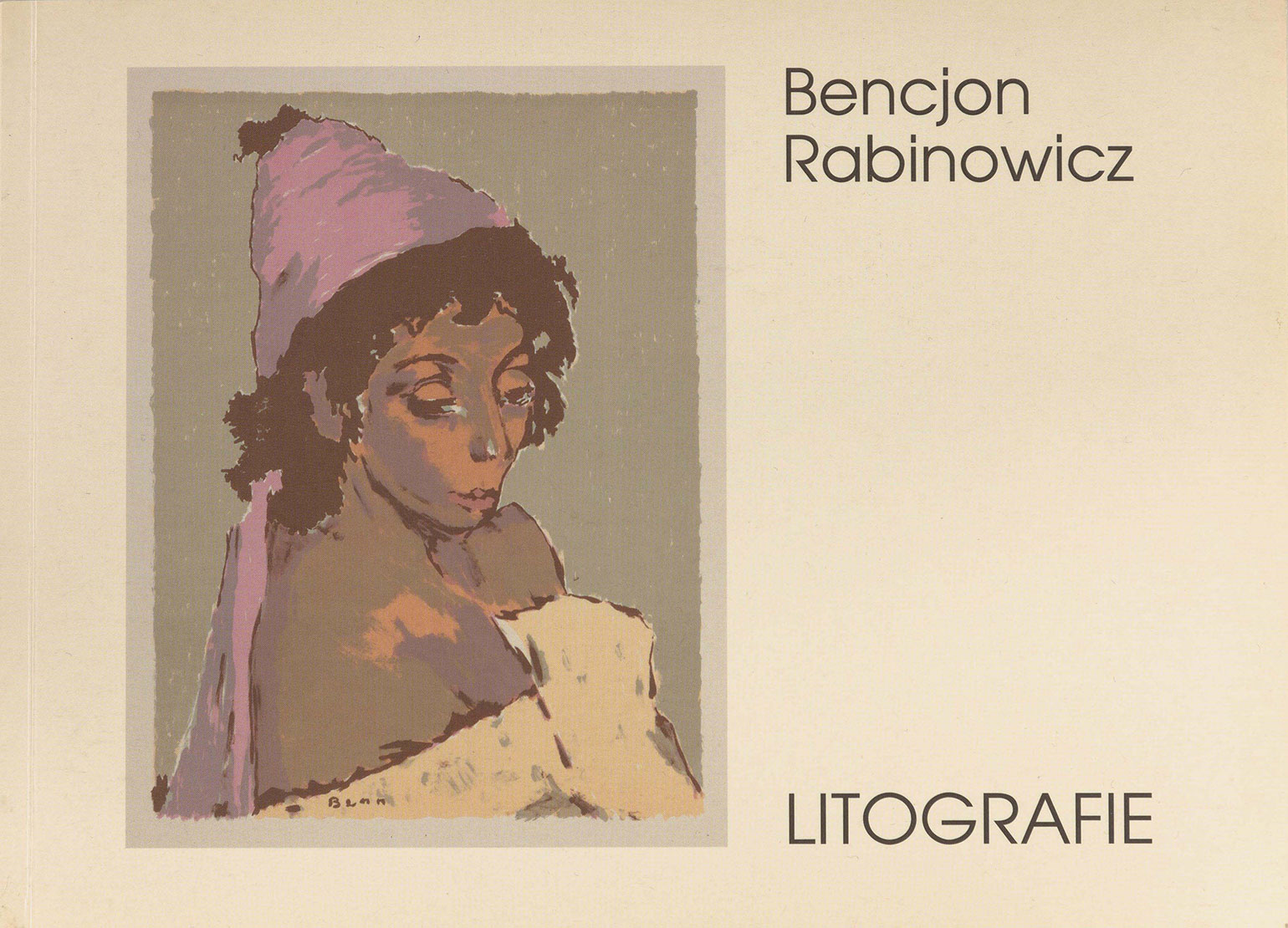
Benn, Bencjon Rabinowicz: Litografie: Na Podstawie "BENN. 14 lithographies originales en couleurs" (Paris 1964) (Białystok: Centrum im. Ludwika Zamenhofa. Oddział Białostockiego Ośrodka Kultury, 2010)
This catalog from the 2010 exhibition held at the Ludwik Zamenhof Centre in Białystok contains fourteen lithographs by Benn, a painter best known in relation to the School of Paris. He was interned at Beaune-la-Rolande in 1941, but eventually released thanks to external pressure from art critic Lo Duca and professor Marcel Brulé. After liberation, Benn continued to produce and exhibit art across Europe.
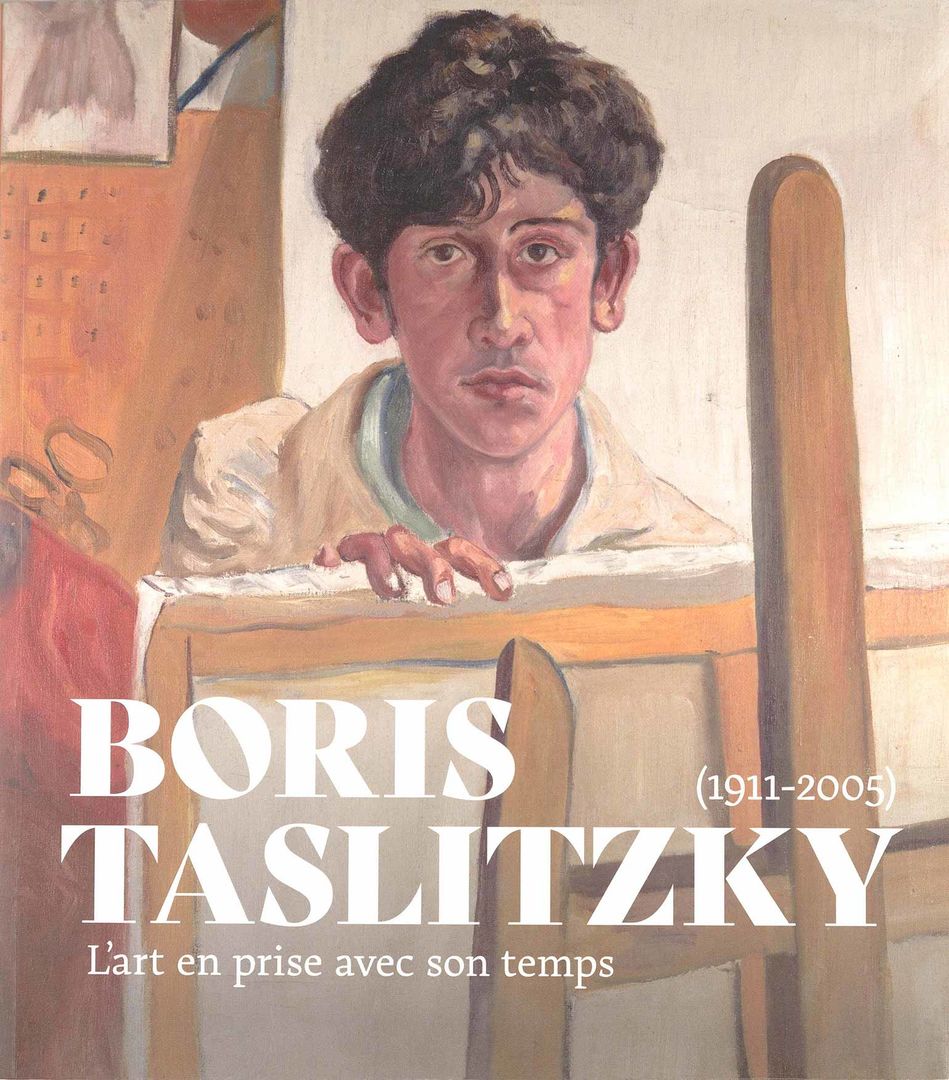
Boris Taslitzky (1911-2005): L'art en prise avec son temps (Paris: In Fine Editions, 2022)
In addition to primary resource material of books published on the artists’ work right after the war, Watson Library has hundreds of exhibition catalogs and monographs on artists of the Holocaust, both those who perished in the internment camps and those who survived. This catalog marks the first major exhibition devoted to the life and legacy of Boris Taslitzky, held at La Piscine, Roubaix, France, March 19-May 29, 2022. The 303 pages chiefly include color illustrations and portraits, as well as essays on his work. Taslitzsky survived the Buchenwald concentration camp.
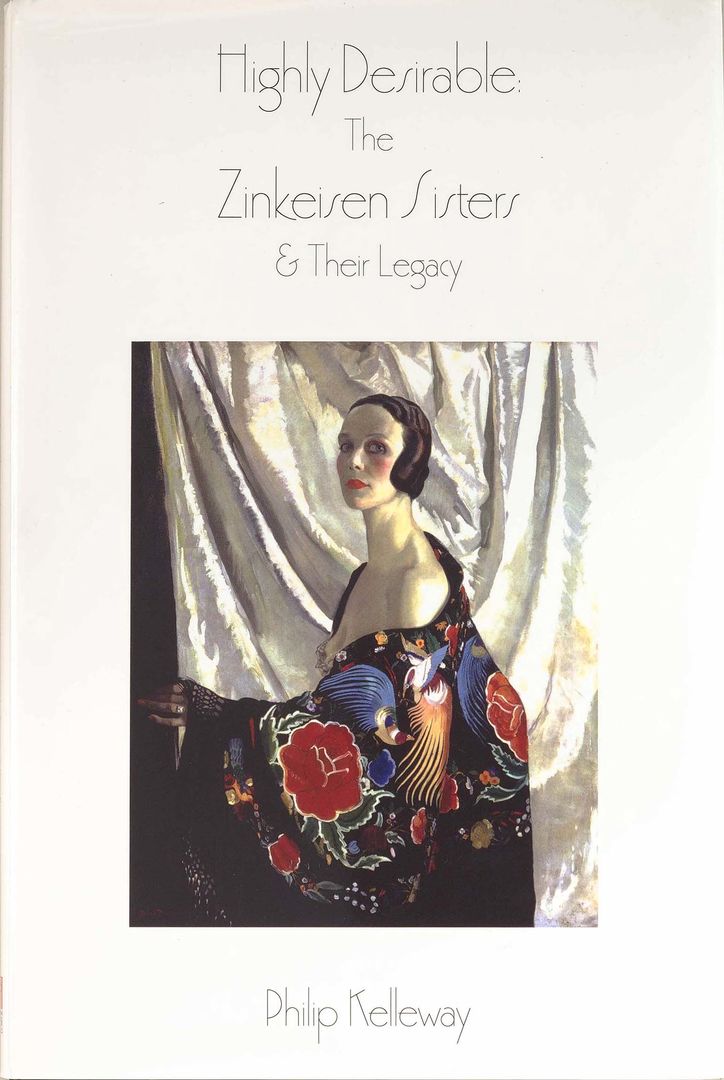
Philip Kelleway, Highly Desirable: The Zinkeisen Sisters & Their Legacy (Leiston: Leiston Press, 2008)
Written by the art historian Philip Kelleway, this book outlines the full artistic scope of sisters Doris and Anna Zinkeisen. Doris was a painter and commercial artist best known for her career in costume and set design, but this book also includes her paintings as a war artist at the Bergen-Belsen concentration camp in 1945. This survey of the Zinkeisens’ work includes 152 illustrations in both color and black-and-white.
All of these publications can be requested to view in the Library through our online catalog, Watsonline. A selection of these books from Watson Library will be on display April 19th, 2023 through the summer. There will also be an online exhibition available.




















